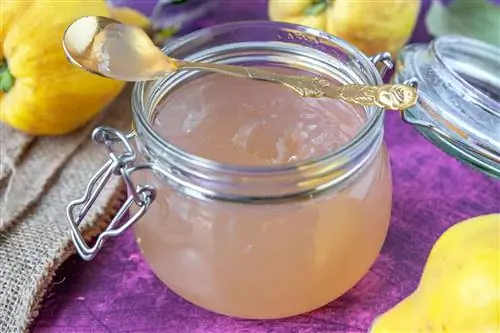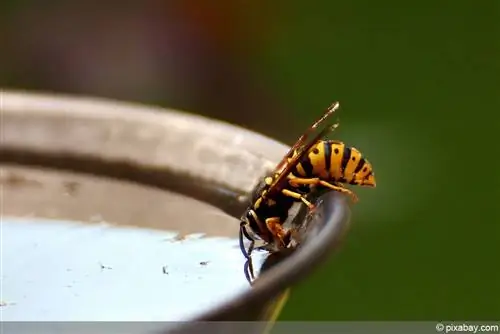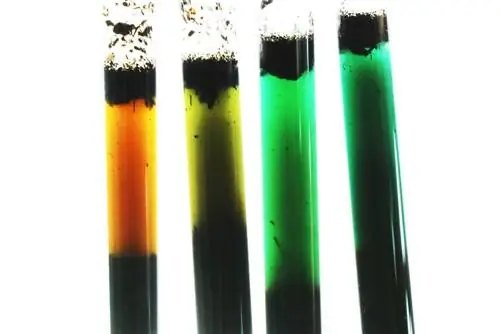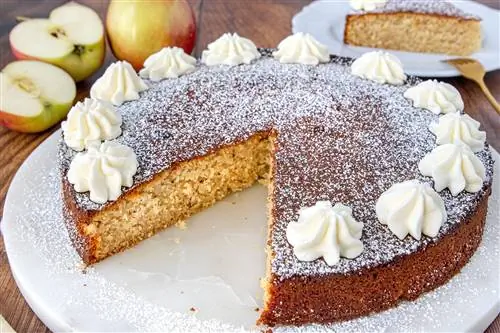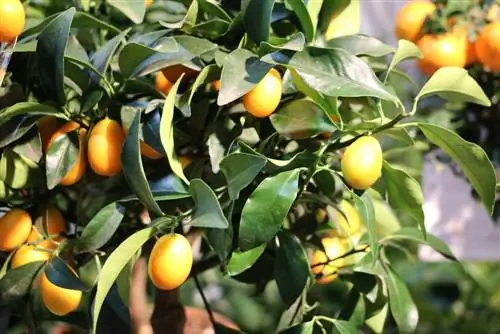- Author admin [email protected].
- Public 2023-12-17 03:39.
- Last modified 2025-01-24 12:45.
Are you lucky enough to have a quince tree in your garden? Quinces not only have a particularly delicate taste (it's not for nothing that they belong to the rose family), they also contain a lot of he althy things:
Vitamin C, potassium, sodium, zinc, iron, copper, manganese and fluorine. Quinces also contain tannins, tannic acid, organic acids and a lot of pectin, the latter of which is interesting for preparation. Unfortunately, you cannot eat the fruits of the quince trees native to Germany raw; they are too hard and bitter due to the tannins they contain. If your quince tree produces a rich harvest in late autumn, these fruits must be processed somehow. Quince jelly is very popular, this is how it works:
Prepare and juice quinces
Before processing, the down (fur) of the quinces must be rubbed thoroughly using a sturdy cloth, as it contains a lot of bitter substances. This can be done more quickly with a fine and very soft wire brush, but since this causes fine scratches in the peel, this procedure is only recommended if the quinces are to be processed further immediately.
The quinces are then washed, roughly diced and placed in a pot. Just cover the quinces with water and bring to a boil, covered. Now the quinces are allowed to cook until soft at a medium temperature for about 45 minutes. The mixture is then sieved through a cloth, very carefully without pressing if you want the jelly to remain completely clear. Lemon juice is added to the quince juice to taste; the juice of one lemon is often used per kilogram of quinces.
Juicing also works with the steam juicer. A little water is added to the pot, the drip tray without holes is placed in it and catches the juice. The perforated bowl is placed over the unperforated one and filled with the chopped quinces. Then juice according to the instructions; the quince will take some time. Our quinces are probably too hard for the normal juicer and could damage the blades.
Cooking quince jelly
Measure the juice and add half its weight in preserving sugar. Spices to taste, such as a sprig of lemon balm, are now also added. The liquid is brought to the boil while stirring and then has to boil for about 2 minutes. The spices are removed and the quince jelly is immediately poured into twist-off jars. Then pull the cling film through high-percentage alcohol and place it on the jars, screw the lid on and turn the jelly upside down for a few minutes.
Quince jelly without preserving sugar
If you harvest the quinces in time so that they still contain enough pectin but are not too unripe, it should work. The ideal time should be when the quinces are just turning from green to yellow. Then don't add any preserving sugar to the juice, just sugar to taste. The pectin in the quinces is said to gel completely without sugar, perhaps an idea for a jelly that is an unusual addition to meat? Maybe refined with some spices? You can check whether the quinces release enough pectin by testing the jelly: put some of the mixture on a cooled saucer; the mixture should then be thick. If it isn't, you can either continue cooking or add preserving sugar.
The softly cooked quinces that are left over after boiling can be used to make a very tasty and he althy quince bread. If you plan to do this, you should cut out the stem, flower and seeds when washing so that the pure pulp remains.

